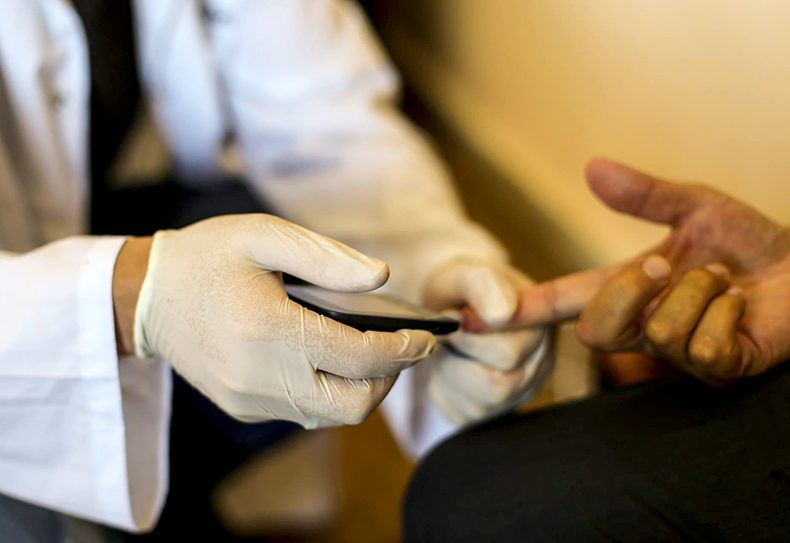
World Diabetes Day 2019
- Article
- 14 November 2019
Today we celebrate World Diabetes Day and are taking the opportunity to highlight the growing diabetes epidemic across the occupied Palestinian territories (oPt) – and the efforts St John is taking to tackle the condition alongside general healthcare providers.
The prevalence of diabetes in 25-64-year-olds in the oPt was 12.7% in 2010. This number is predicted to reach 20.8% in 2020 and 23.4% in 2030. If the most developed nations are struggling with tackling this condition – how does a state besieged with political turmoil and lack of investment such as the oPt fare?
In 2019 we concluded a year-long Rapid Assessment of Avoidable Blindness in the oPt, for those aged over 50. This report had a number of helpful findings, especially compared with a similar 2008 study conducted by St John of Jerusalem Eye Hospital Group (SJEHG).
Our 2019 study found that Diabetic Retinopathy (DR), a serious but manageable eye condition caused by diabetes, was one of the main causes of avoidable blindness in the oPt, causing almost 1 in 4 of all cases of avoidable blindness. A decade prior it only caused 8% of blindness. Shockingly in our study, more than 40% of people with diabetes either had never had an eye check-up or had not been checked more than two years prior to the survey. In a study conducted in 2012 into diabetes across the oPt, only 1 in 5 diabetic cases were controlled. What makes this clear is that diabetic services (both general and ophthalmic) are not keeping up with the demand caused by growing rates of diabetes across the country.
Despite the staggering numbers, DR was not a priority in the latest government Strategic National Health Plan (2017). There is no national integrated DR screening programme at the primary health care level or any plans to improve the capacity of health care providers to screen for DR. Compounding the problem here is an insufficient number of ophthalmologists.
Dr Nahed Mikki, who has project managed the most recent RAAB, explains the importance of these results: